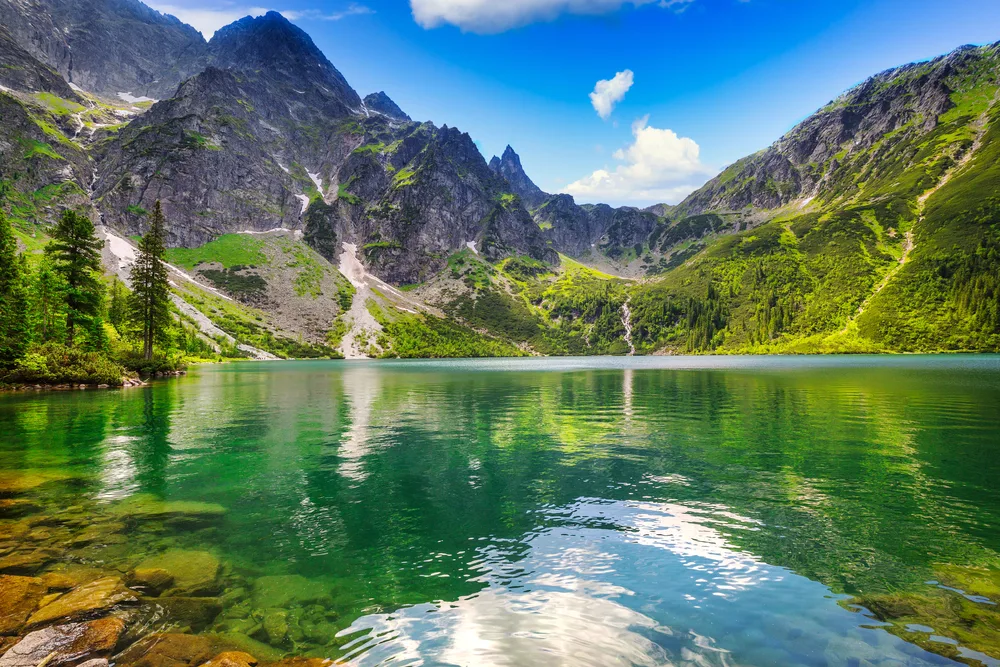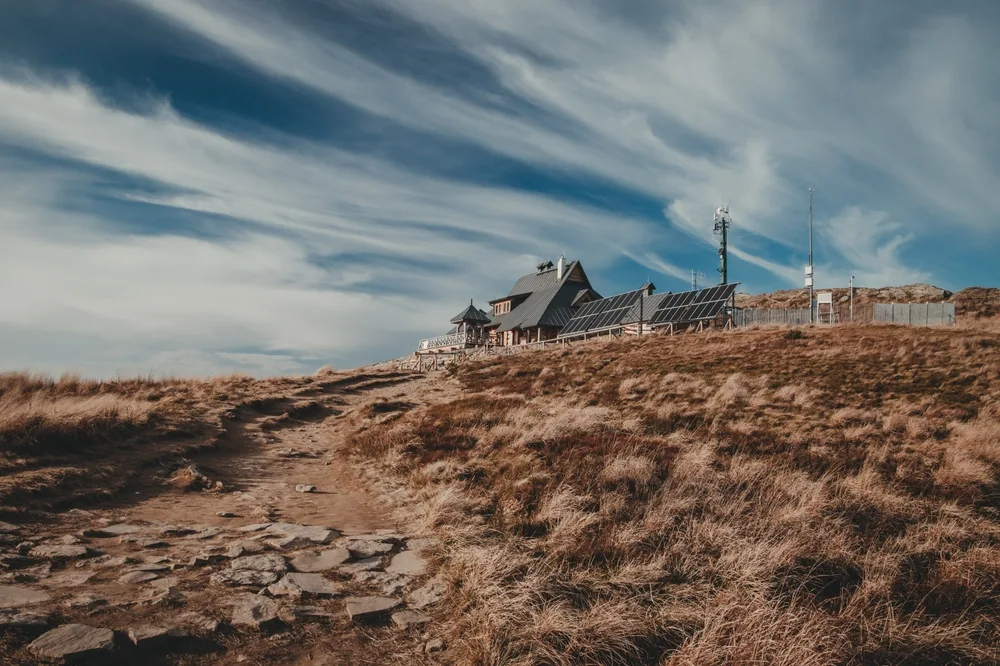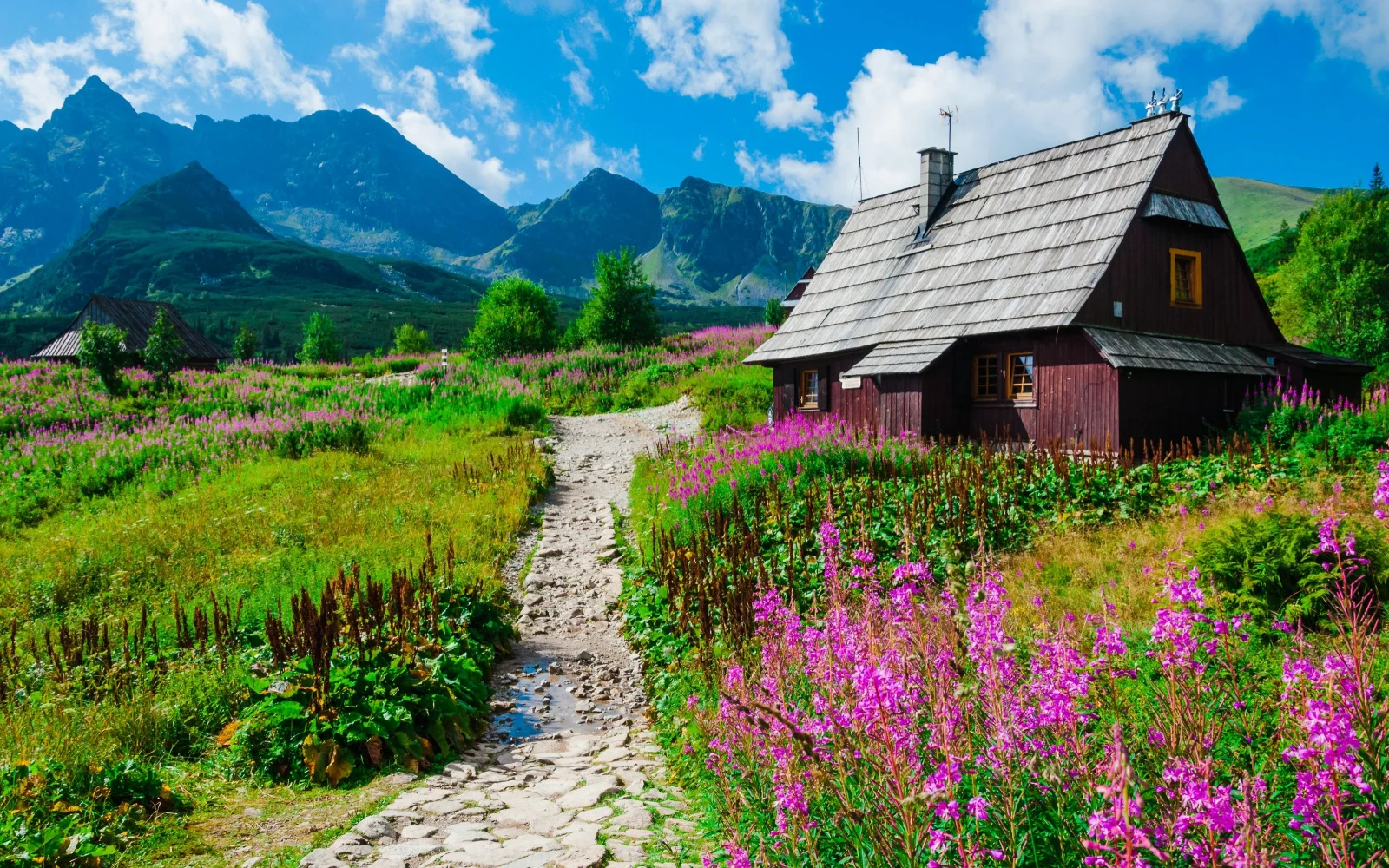Poland has so much to offer for visitors who decide to stray from more well-trodden paths in Europe and explore the country. From some of Europe’s last truly wild areas to picturesque historic cities, Poland has something for everyone.
The 16 Best Places to Visit in Poland
For many years, Poland was considered a destination just for intrepid travelers. Now, more and more people are realizing that this country, located right in the center of Europe, has so much to offer.
Poland has had a tumultuous history, from building a strong medieval country of its own with the Polish-Lithuanian Commonwealth to being conquered by several empires for centuries.
All of the different empires and peoples who passed through the area left their marks in the cities and towns that feature gorgeous architecture and form a treasure trove for history buffs.
Poland is also one of the best places in Europe to visit for people looking to explore nature.
Poland has some of the last truly wild nature in the ultra-modern European Union. It is one of the few places where you can find certain species, such as the European bison.
No trip to Poland is complete without some wilderness exploration. Here are some of the best places to visit in Poland so you can start planning your itinerary, hand-picked by our knowledgeable travel experts.
1. Krakow

Sopotnicki/Shutterstock
According to many visitors, Krakow is not just the prettiest town in Poland but one of the prettiest in all of Central Europe. Centuries of history, beautiful architecture, and a bohemian vibe make this a great destination for visitors.
Start your visit to Krakow at the famous Rynek Glówny, or market square, which has been where local people come for their food since the 13th century.
Wander around the narrow streets of Old Town, taking in the architecture. Duck inside one of the many museums or take a break from sightseeing in the city’s many parks.
Be sure to wander in Kazimierz, the Old Jewish Quarter, for both a look at Poland’s once-vibrant Jewish community and a somber reminder of the country’s tragic recent history during Nazi occupation.
2. Warsaw

Lanski/Shutterstock
Krakow may be Poland’s cultural capital, but Warsaw is its actual capital. Don’t picture a gray, anonymous metropolis, as Warsaw still has plenty of quaint small-town charm as well as lively culture.
A lot of Warsaw’s historic core, unfortunately, was decimated during World War Two, but a stroll down Krakowskie Przedmieście or a walk through the reconstructed Old Town will show you some of the prettiest things the city has to offer.
To learn more about Poland’s history and art, check out the National Museum. Learn about the bravery of the city’s people at the museum dedicated to the Warsaw Uprising.
Warsaw also has a quirkier, modern side. Design lovers will adore the Museum of Posters, while music lovers will enjoy the many clubs and bars.
3. Gdańsk

Patryk Kosmider/Shutterstock
Gdańsk, a city on the Baltic coast, has a very different atmosphere from the rest of the country, which might be because it spent a lot of time both as a free city member of the Hanseatic League and under German rule.
Walk through the colorful streets to get a feeling for this once-mighty port.
Start your journey to Gdańsk on the Royal Route, the part of town that dates to its glory days in the 17th century and contains old houses of wealthy merchants, the City Gates, and other attractions.
And don’t forget to check out St. Mary’s Basilica, the world’s largest brick church with an imposing astronomical clock.
4. Bialowieża Forest Reserve

Alex Marakhovets/Shutterstock
Bialowieża Forest Reserve, on the Polish-Belarusian border, is where Europe’s last truly wild forest is located. The reserve protects what remains of the primeval forest that once covered large swaths of the continent.
Visiting the park feels not just like a trip away from the cities but like a trip back in time. While walking in the reserve, you will want to keep an eye out for local wildlife, such as countless bird species and some of the last remaining wild European bison.
Bialowieża is also a great place to explore the culture of people who lived in the forest for centuries by visiting the local village and Museum of Wooden Architecture.
5. Baltic Sea Coast

Sopot, Poland – September 29, 2017: Sopot resort with SPA, old lighthouse, wooden pier (molo), marina, yachts, beach, hotels, square, vacation infrastructure and park. Aerial view at sunrise/Nahlik/Shutterstock
Few people realize that Poland has a coast. The Baltic Sea coast is a popular summer destination for locals and foreigners alike, thanks to its many quaint towns and beaches.
Take a trip to the funnily-named Hel for gorgeous trails near the sea and local seafood. Visit the spa town of Sopot for glitzy resorts and the Wooden Pier, where elites from this part of Europe came for years to see and be seen.
Świnoujście, spread out on 44 islands, is a popular family destination thanks to its laid-back atmosphere and many opportunities for outdoor adventures.
6. Tatras Mountains and National Park

Patryk Kosmider/Shutterstock
The Tatras Mountains and National Park are on the border between Poland and Slovakia. The mountain range contains many great opportunities for hiking and getting closer to nature.
Most of the Tatras are actually in neighboring Slovakia, but it is easy for hikers to cross over as they wander. In the Polish side of the mountain range, don’t miss Rysy, Poland’s highest mountain, Wielka Sniezna, a majestic cave system, and other beautiful sights.
7. Lublin

Lublin, Lubelskie / Poland – 2019/08/18: Panoramic view of city center with St. Stanislav Basilica and Trinitarian Tower in historic old town quarter/ArtmediaFactory/Shutterstock
Lublin is one of Poland’s most vibrant cities thanks to its large student population. The contrast of old meets new means that it has one of the best nightclub scenes of any Old Town in Europe.
If your student partying days are long behind you, don’t worry because Lublin still has a lot to offer. Check out the beautifully preserved Old Town, imposing Lublin Castle, and Holy Trinity Chapel, which has an eclectic mix of architectural styles.
8. Malbork

Patryk Kosmider/Shutterstock
Even centuries after their demise, the Teutonic Knights still fascinate people with their mysterious ways (and the many myths swirling around their order). The most imposing remnant of their history is the famous castle in Malbork.
The main attraction in Malbork is the massive red castle, actually the largest castle in the world. Be sure to hop on a guided tour to learn the most you can about the castle and the knights who built it.
9. Poznań

Sergey Dzyuba/Shutterstock
Colorful Poznań was almost completely destroyed during World War Two, but its Renaissance-era Old Town was lovingly reconstructed. Today, visitors can stroll through the beautiful streets.
The city even helpfully set up the Royal Imperial Route to take you through most of the historic sites. That doesn’t mean that Poznań just lives in the past — in fact, it has a vibrant culture in the present day.
It is a great destination for lovers of aquatic sports thanks to the nearby artificial lake Malta. Music lovers should time their visits to come in the summer during the many international festivals.
10. Auschwitz-Birkenau Memorial and Museum

PhotoFra/Shutterstock
A visit to Auschwitz-Birkenau Memorial and Museum, one of the Nazi regime’s most notorious concentration camps, is probably not a stop that you will enjoy. However, it is an important stop to learn about the Holocaust in Poland, which murdered three million Polish Jews.
Auschwitz-Birkenau is a sobering day trip from Krakow. You can take a guided tour, which is the best way to give you context if you don’t know much about the history of the Holocaust but be sure to find time for quiet reflection.
11. Wroclaw

Yasonya/Shutterstock
Wroclaw, once the capital of the Kingdom of Poland, has never lost its former glory. This city in the southern region of Silesia is worth a visit even among the steep competition from other picturesque Polish cities.
Wroclaw has a beautifully preserved medieval core spread out over several islands. For a great visit, climb to the top of St. Elizabeth’s Church for a picturesque observation deck.
12. Zakopane

Zetat/Shutterstock
If you’re looking for some adrenaline-fueled outdoor adventures, then Zakopane is one of the best places to go in Poland. Located in the Tatras Mountains, the town is a popular base for skiing and snowboarding.
Zakopane is also a great destination in the summer. You can go hiking, explore the vibrant arts scene, or slide down a mountain on the gravitational slide on Gubalówka.
13. Bieszczady Mountains

Marcinm111/Shutterstock
The Bieszczady Mountains are another mountain range in southern Poland, part of the larger Carpathian range that extends into Slovakia, Ukraine, and beyond. The mountains are unique because of their polonyna, a type of mountain meadow that only exists in this range.
The trails are gentle enough even for beginner hikers, so come in the spring or summer to explore the beautiful surroundings. Just be warned that the setting is very rustic — there is only one guest house in the whole mountain range.
14. Ojców National Park

mkos83/Shutterstock
Ojców National Park is off the beaten path for most foreign visitors to Poland, which just means that you’ll have more space to yourself to explore this beauty. Ojców National Park is small enough to explore in a day, but there is still plenty to see.
Don’t miss the Trail of the Eagle’s Nests, which connects dozens of castles that are within park boundaries and takes you through the spectacular limestone landscapes. Come in the spring and summer, when hundreds of species of butterflies descend on the park.
15. Zalipie

mangojuicy/Shutterstock
Poland is still a very rural country, so you can’t say that you’ve seen it without visiting one of the many picturesque villages. One of the best to visit is Zalipie, a perfect example of folk art.
All of the houses in Zalipie are painted with colorful flowers by the local women. Take photos and visit the local House of the Women Painters to learn about these untrained artists who often led difficult lives but still made their homes beautiful.
16. Toruń

Torun, Poland – 09.06.2020: Torun from a bird’s eye view. Morning visit to the town hall tower. Fascinating facades in Old Town. Morning rush on city market. Great panorama of Torun/Avillfoto/Shutterstock
Toruń is one of Poland’s lesser-known towns, which is a shame because history lovers adore it. Not only is Toruń one of Poland’s oldest settlements, dating all the way back to the 8th century, but it is also one of the few towns whose historical buildings are all original instead of replicas rebuilt after war and destruction.
Visitors to Toruń should walk around the beautifully preserved Old Quarter, where centuries of old buildings nestle against each other.
Check out the Gothic churches, many with their original paintings and statuary. Finally, science lovers should visit the museum dedicated to Copernicus, the town’s most famous son.
Things to Consider
Here are some things you should keep in mind as you prepare for your trip to Poland. First, understand that Poland had a tumultuous recent history, and certain topics are often prickly.
Don’t interrogate locals about what life was like under communism if they don’t want to talk about it, don’t call Poland Eastern Europe, and definitely don’t assume Poland is the same as Russia.
Second, Poland is in the European Union but does not use the euro as its currency, so hit up an exchange office or visit a local ATM. Finally, read up on local regulations before you travel.
It is tempting to crack open a can of beer in the park, but drinking in public is actually illegal, and you will get hit with a large fine (of course, you should familiarize yourself with local law before you visit any place).
Frequently Asked Questions

Sergii Figurnyi/Shutterstock
If you’re visiting Poland, you might want to know the answers to these questions:
What is the most beautiful part of Poland?
The answer depends on what you think of as beautiful. If you love nature, Bialowieza Forest will be the most beautiful to you, while lovers of history will swoon at Krakow’s Old Town.
Which part of Poland should I visit?
The best way to explore Poland is to see a few different regions. Check out some of the most famous towns such as Krakow and Warsaw, visit a mountain range in the south, and take a few days to relax on the Baltic Sea.
Is Krakow or Warsaw better?
Visitors who only have time for one city on their itinerary usually want to know which of those two deserves the nod. Krakow is better for tourists as its historic Old Town is better preserved, and the atmosphere is more laid back.
Where is the most beautiful city in Poland?
This question is a subject of debate among visitors and certainly many Poles themselves. Most people say Krakow, but Gdańsk and Wroclaw are also very beautiful.
What are two tourist attractions in Poland?
Poland certainly has more than two tourist attractions, but two honorable mentions for this article are the Wieliczka Salt Mine near Krakow, with its chapels carved out of the former mine walls, and the Crooked Forest in Gryfino, with naturally crooked trees.
So, What Is the Best Place to Visit in Poland?
Poland has enough to see and do to occupy visitors for several days. Spend time exploring the storybook towns and cities, from Gdańsk in the north to Wroclaw in the south, and don’t forget to check out nature as well.



